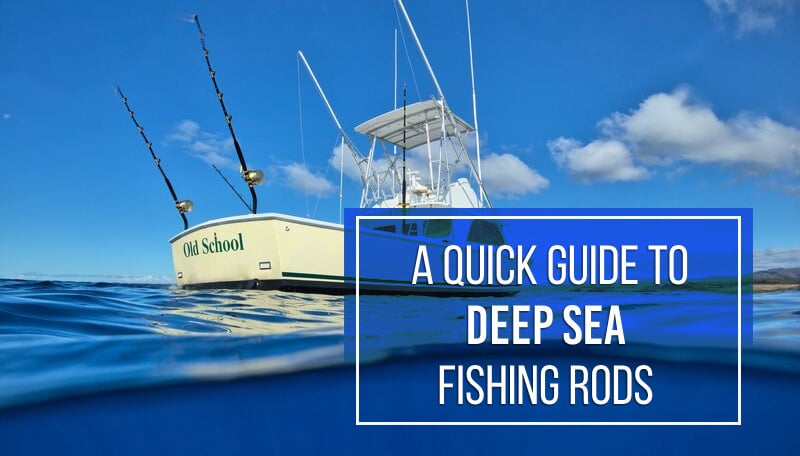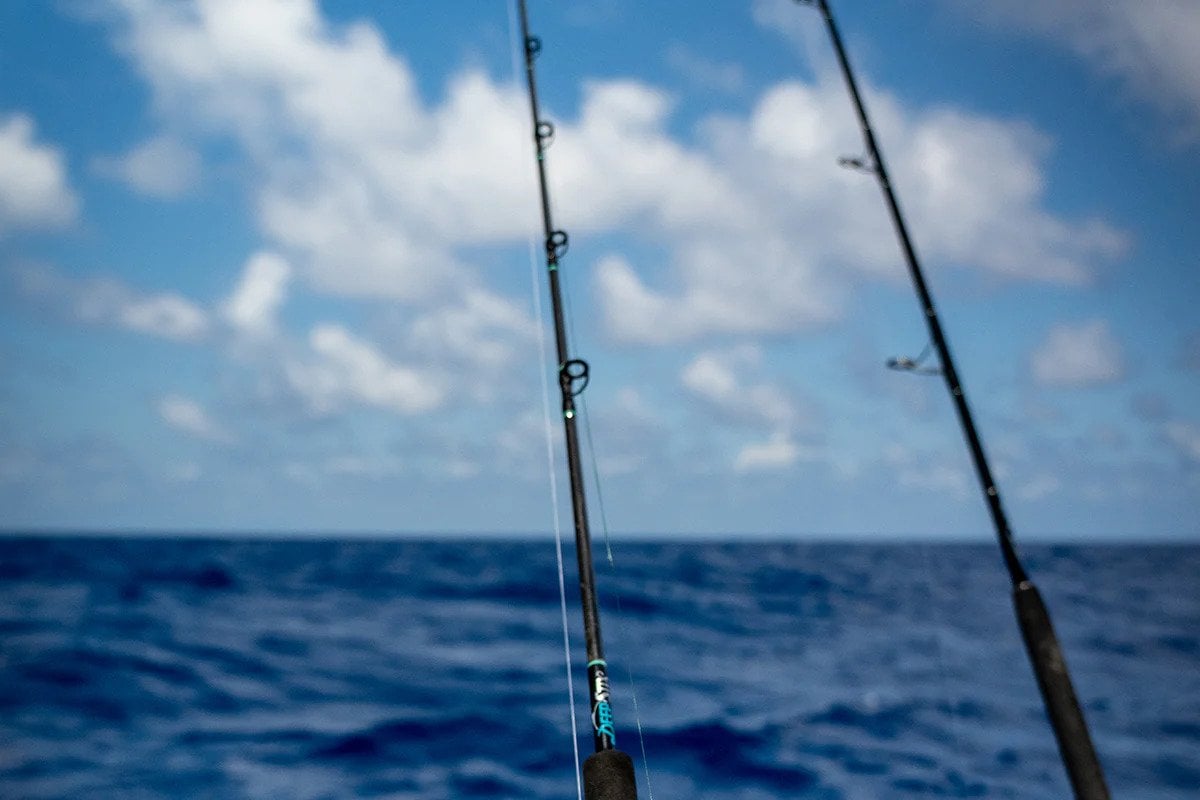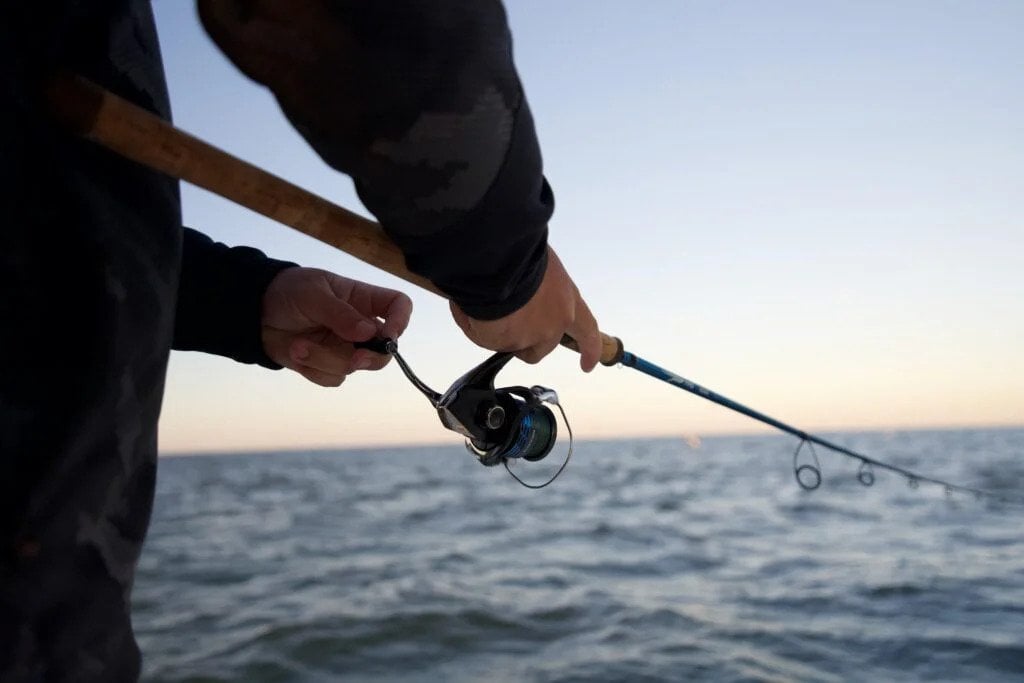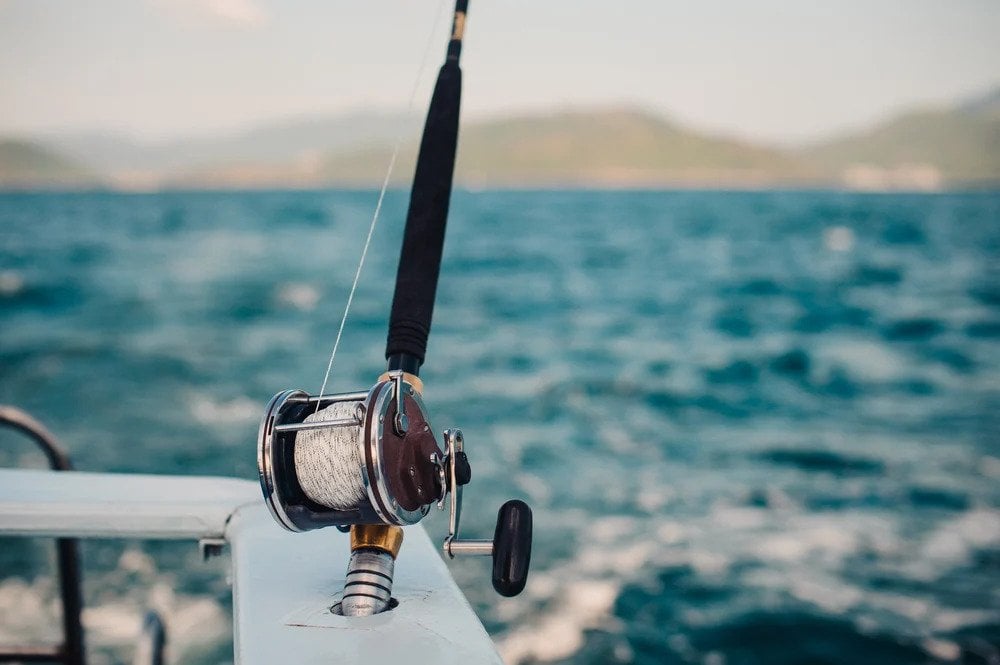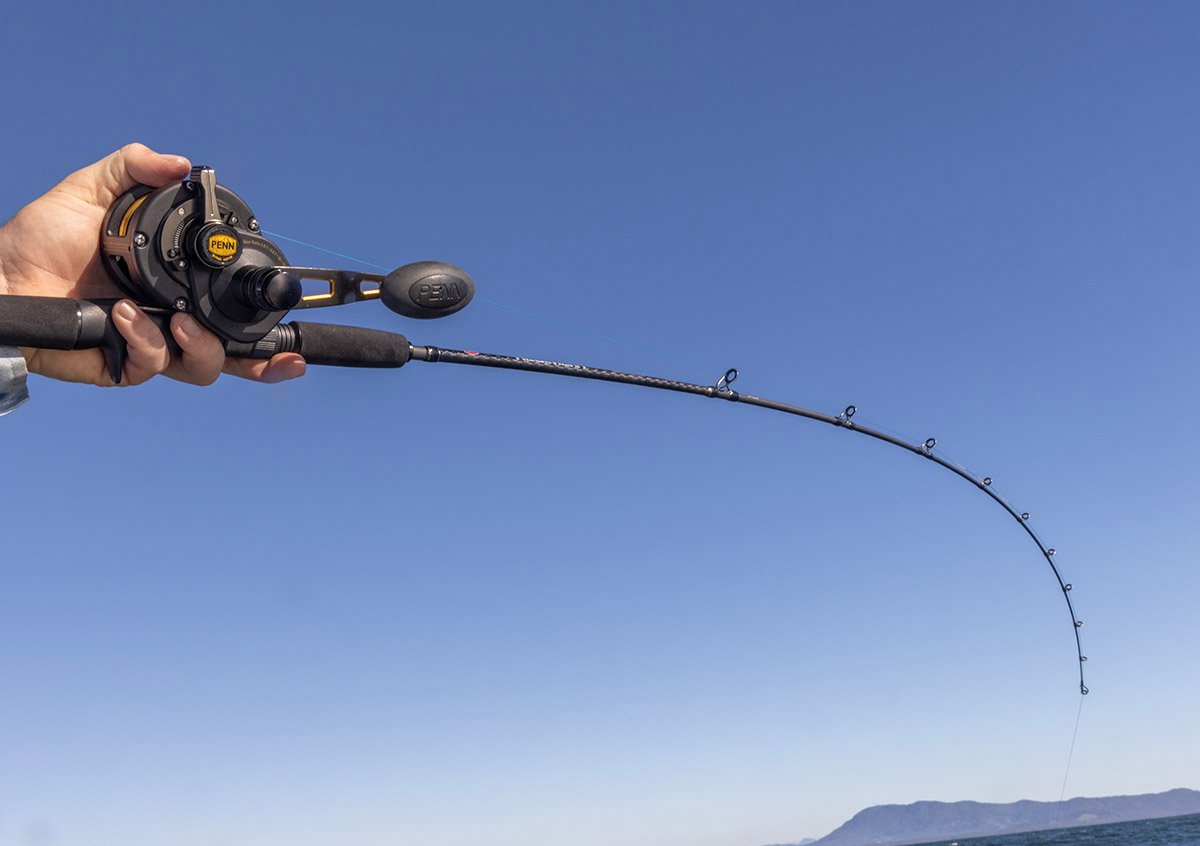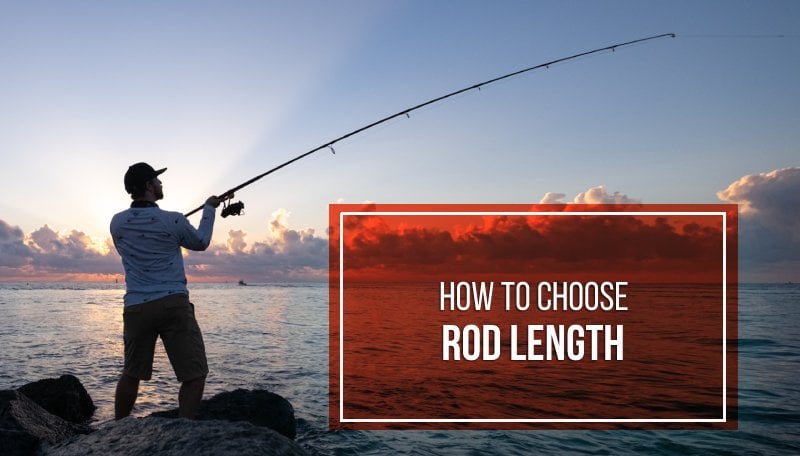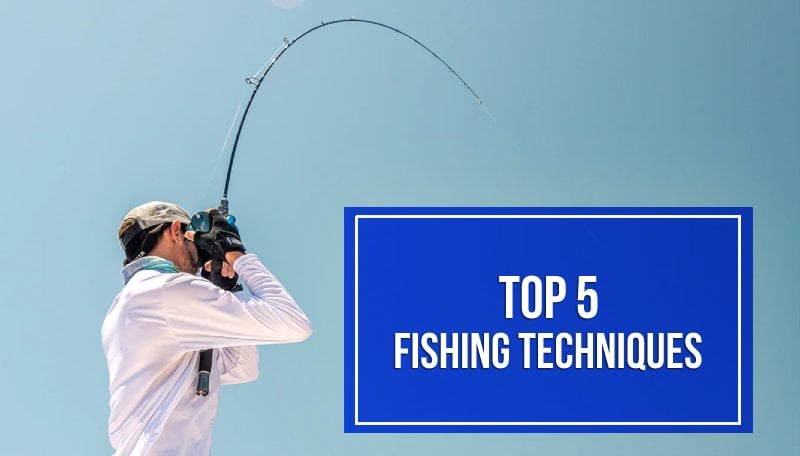Last Updated on
Most of us occasionally imagine ourselves surrounded by the blue expanse that goes as far as the eye can see. The deep sea, the blue water, the open ocean – the names are ample, but the essence remains the same. The open water hides a whole world below its deceivably calm surface. Big fish is one of the treasures of that world, one that anglers can reach with the help of dedicated tools. In this guide, we cover how to choose these tools. Let us introduce the hero of the day: a rod for deep sea fishing.
Table of Contents
Definition of Deep Sea Rods
Deep Sea vs Regular Saltwater
Types of Deep Sea Rods
Spinning Rods
Trolling Rods
Overhead Rods
Conclusion
FAQs
What are Deep Sea Fishing Rods?
Deep sea fishing rods are the trustful companions that every angler needs when venturing into the azure expanse. Designed specifically for tackling the unique challenges of deep-sea fishing, these rods are built to withstand the pressure, strength, and sheer determination of the fish that lurk beneath the surface.
How Do They Differ from Regular Saltwater Rods?
Now, you might be wondering, “What’s the big deal? Can’t I just use my regular saltwater rod for deep-sea fishing?” Well, not quite. While both deep-sea and regular saltwater rods are designed for saltwater use, there are some key differences between the two:
Strength & Durability: Deep-sea fishing rods are built to handle the heavyweights of the ocean. From powerful marlins to massive tunas, these rods can withstand the rigorous demands of deep-sea angling. All deep sea fishing rods are designed to be heavy power to manage larger lures and rigs.
Length & Action: Deep-sea fishing rods are generally shorter when compared to their saltwater counterparts and have fast or medium action. That allows for better control and leverage when battling sea giants.
Materials: Deep-sea fishing rods are typically made from high-quality materials like graphite or composite blends, ensuring they can endure the harsh conditions of the open ocean.
Types of Deep Sea Fishing Rods
Alright, now that we’ve covered the basics, let’s dive into the different types of deep-sea fishing rods: spinning, trolling and overhead. They are not exclusive to deep sea fishing but are the most widely-used types. Each one has its own unique set of peculiarities, so let’s explore them one by one.
Spinning Rods: Versatility and Ease
Spinning rods are a popular choice among anglers of all skill levels regardless of the style of fishing. Their versatility and ease of use are the main reasons why they’ve won the affection of so many people. These rods are designed to be paired with spinning reels and can handle various fishing techniques, including jigging.
Peculiarities of Spinning Rods
Spinning rods come with several distinctive features by which you can recognize them among others:
Reel Position: Spinning rods are designed with the reel hanging below the rod, which provides better balance and makes it easier to cast. This configuration also allows for a more natural wrist movement during casting, reducing fatigue.
Line Guides: Spinning rods feature larger line guides near the base, which gradually taper down to smaller guides near the tip. This design helps reduce friction during casting and improves overall casting distance and accuracy. The first guide called the “stripper guide” is the largest and plays a critical role in managing the loops of line coming off the spinning reel.
Versatility: One of the main advantages of spinning rods is their versatility. They can be used for various techniques, such as casting, jigging, live bait fishing, or even trolling in some cases. This makes spinning rods an excellent choice for anglers who enjoy trying different fishing styles or targeting a wide range of species.
Ideal Conditions for Spinning Rods
Beginner Anglers: Due to their ease of use, spinning rods are an excellent choice for anglers who are on their way to earning their “blue water fishing” badge.
Finesse Techniques: Spinning rods are perfect for finesse techniques, such as drop-shotting or wacky rigging, where sensitivity and precision are crucial.
Trolling Rods: Power and Control
Trolling rods are specifically designed for the trolling technique, where lures or bait are dragged behind a moving boat to entice fish. These rods are built to withstand the unique challenges of trolling (surprise), making them one of the possible tools deep sea anglers might use.
Peculiarities of Trolling Rods
Trolling rods have several distinctive features that set them apart from other types of deep-sea fishing rods:
Length & Action: Trolling rods are generally shorter and stouter compared to spinning rods. This compact design provides better leverage and control when fighting large fish. The action of trolling rods is usually moderate to fast, allowing for a perfect balance between sensitivity and strength.
Line Guides: Trolling rods often feature roller guides or heavy-duty line guides that reduce friction and wear on the fishing line. Roller guides are particularly beneficial when using heavy monofilament or braided lines, as they help maintain smooth line movement during long battles with trophy fish.
Butt & Gimbal: Many trolling rods come with a notched butt or gimbal at the base of the rod. This feature allows the rod to be secured in a fighting belt or chair, providing extra support and stability during intense fights with large fish.
Ideal Conditions for Trolling Rods
Trolling rods excel at two pivotal aspects of deep sea fishing:
Targeting Large Game Fish: Trolling rods are ideal for targeting big game species like marlin, sailfish, tuna, and dorado. Their strength and durability make them well-equipped to handle the power and speed of these fish.
Fishing in Open Water: Trolling rods excel in open water conditions, where their strength and stability can be fully utilized. They’re perfect for covering large expanses of water in search of pelagic game fish.
Overhead Rods: Power and Precision
Overhead rods, also known as conventional rods or boat rods, are another type of deep-sea fishing rod that deserves special attention. These rods are designed to be paired with overhead reels (hence the name) and are especially popular among anglers targeting larger game fish. You don’t need to cast them – just drop your line and wait for fish to take the bait.
Peculiarities of Overhead Rods
Overhead rods come with their own set of unique features that set them apart from other types of deep-sea fishing rods:
Reel Position: Like trolling rods, overhead rods feature a reel seat on top. This allows for better balance and control when fighting powerful fish.
Line Guides: Overhead rods typically have fewer and larger line guides compared to spinning rods. This design helps reduce friction and allows for smoother line movement, which is crucial when battling big game fish.
Ideal Conditions for Overhead Rods
Overhead rods truly shine in the following deep-sea fishing scenarios:
Targeting Large Game Fish: As mentioned earlier, overhead rods are perfect for targeting large, powerful species like marlin, tuna, and sailfish. Their strength and fast action make it easier to handle these massive fish.
Trolling and Bottom Fishing: Overhead rods excel in trolling and bottom fishing techniques, where their power and durability can withstand the constant pressure from the moving boat or the weight of heavy sinkers.
Jigging: Overhead rods can also be used for jigging, as their fast action allows for quick and responsive movements when working the jig.
Heavy Cover: When fishing in areas with heavy cover, such as reefs or wrecks, overhead rods provide the power and control needed to prevent the fish from diving into the structure and breaking the line.
Wrapping It Up
So there you have it, folks – a comprehensive guide to deep-sea fishing rods! Whether you’re a seasoned angler looking to up your game or a curious newbie ready to tackle the big blue, choosing the right deep-sea fishing rod is a crucial component of a successful and enjoyable fishing adventure. The open water awaits, you only need to equip yourself for the trip.
FAQs
What kind of rod is best for deep sea fishing?
The best kind of rod for deep-sea fishing depends on your preferred fishing technique and the species you’re targeting. Generally, overhead rods (also known as conventional or boat rods) and trolling rods are popular choices for deep-sea fishing due to their power and durability. Overhead rods offer more precision and control, making them suitable for jigging and bottom fishing, while trolling rods excel in handling the constant pressure of trolling lures or baits.
What type of line should be used for deep sea fishing?
Monofilament and braided saltwater fishing lines are both valid options. The monofilament line is well-suited for trolling, while the braided line is a great choice for bottom fishing. The braided line is thinner yet more durable and has very low stretch.
Are there any tips or tricks for using a deep sea fishing rod effectively?
- Use the proper technique: When casting, hold the rod firmly and use your entire body to create leverage. A smooth, controlled motion will help you cast further and more accurately.
- Set the drag: Adjust your reel’s drag system to provide enough resistance to tire out the fish without breaking the line or causing the hook to pull free.
- Keep your line tight: Maintain tension on the line to detect bites and prevent slack, which can lead to missed hooksets or losing the fish.
- Use a fighting belt: A fighting belt provides additional support and leverage when battling large fish, helping to reduce strain on your arms and back.
- Be patient: When reeling in a big fish, take your time and let the fish tire itself out before attempting to bring it in. Avoid high-sticking (lifting the rod too high), as this can put excessive strain on the rod and increase the risk of breakage.
- Practice proper fish handling: Use a net or gaff to safely land your catch, and handle the fish with care to avoid injury to yourself and the fish.
